How Much Raw Food to Feed German Shepherd Puppy
You are here: Home / Food / Puppy Feeding Guides / Raw Food for Puppies: How to Feed Your Puppy on Natural Raw Food
In this post, we answer your questions on using raw food for puppies. We also discuss everything from how much to feed and how often. Plus, what types of meat to give your puppy, and how to make a balanced diet.

Whilst most dogs nowadays feed on commercial kibble, there is a growing interest in raw food for puppies
What Are the Available Raw Foods for Puppies?
A diet of raw meaty bones (RMB) or biologically appropriate raw food (BARF) is an increasingly popular way to feed dogs. While RMB is pretty self-explanatory, you may wonder what exactly BARF means.
The BARF diet encompasses feeding 60% raw meaty bones and filling the remaining 40% with other raw foods. These may include grains, vegetables, legumes, and other animal proteins as we will see.
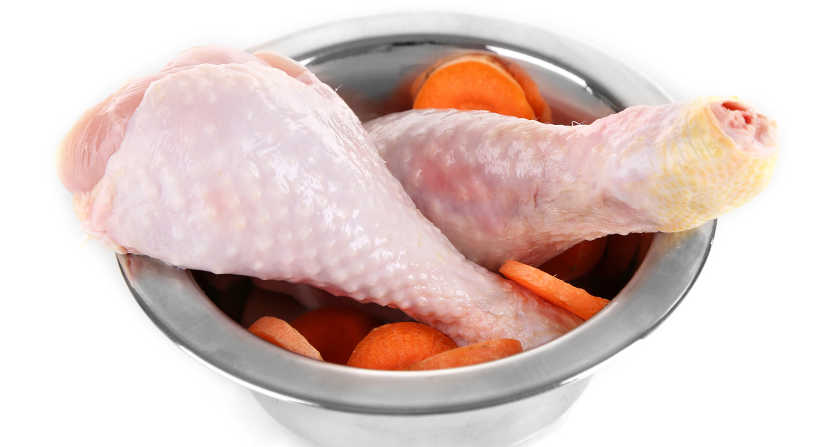
Just as there are risks and benefits to feeding on kibble, there are undoubtedly the same for raw feeding. So you might find it helpful to read about the pros and cons of raw food for puppies before going ahead.
Today, though we'll focus on the HOW of raw feeding, rather than the IF or the WHY. Let's just first recap why we might choose to use raw food for puppies.
The Aim of Raw Feeding Your Puppy
A dog's digestive system is designed for processing meat and bones. However, dogs have associated with humans for ages.
As a result, they can now digest many additional types of food. That's why it is possible to feed a puppy on processed commercial food too.
Despite the fact that the dog has adapted to eating a wider range of food, his digestive system is still ideally suited for processing carcasses. The aim of raw feeding, therefore, is to give your dog a diet made for them as a carnivorous animal.
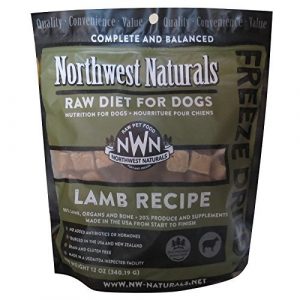
Dogs have the powerful crushing jaws, strong stomach acids, and short meat-eaters digestive tract to process a completely natural raw diet.
Raw Food for Puppies: Rules and Principles
![]()
- Interest in raw meat for dogs is growing steadily. But is it really safe? Let's look at the evidence
- Should you feed your dog on a natural raw diet. We'll help you sort through the facts and fiction about raw food for puppies. That way, you can make the right decision for your dog.
If you choose to feed raw, you need to understand the principles involved and follow some basic rules to keep your puppy safe and healthy.
Even for animals perfectly designed for crushing and swallowing bones, there are certain risks involved. And it is important that we minimize those risks in any way possible.
Safely Using Raw Food for Puppies
Before we go any further, let's talk a moment about safety. Because whichever way you decide to feed your dog, it makes sense to reduce any risks to an absolute minimum.
One way to do this is to buy an off-the-shelf raw food.

But many raw feeders want to make their own food at home. So let's look at what you can do to feed raw in the best way.
It is a good idea to follow these feeding practices if you are going to raw feed your dogs. This is doubly important with puppies.
Rule One – Feed Fresh Meat to Your Puppy
Once an animal is dead, its flesh begins the process of decay.
As part of this process, the pathogens in meat will increase naturally over time, unless it is frozen. So be sure to freeze meat soon after purchasing or refrigerate it below 4 C and use it within a couple of days.
Older dogs can often cope with pathogens that would make humans ill. Puppies, however, are more vulnerable. Only feed them the freshest meat that you would feed your own family.
Rule Two – Handle and Store Raw Meat Safely
One of the main risks of feeding raw is not to your dog, but to you.
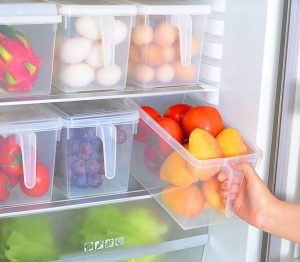 Handling raw meat, especially chicken, is always risky. Raw chicken especially is typically contaminated with bacteria such as salmonella. That's why eating chicken that is raw or not cooked through can make you sick.
Handling raw meat, especially chicken, is always risky. Raw chicken especially is typically contaminated with bacteria such as salmonella. That's why eating chicken that is raw or not cooked through can make you sick.
You can reduce this risk in a number of ways.
Careful Storage:
Store raw meat in covered containers, separate from your other food and well away from foods eaten raw (like salads).
We like these fridge containers from Amazon with clip-on lids. Of course, you can use any container with a lid that is dishwasher proof or can be washed in hot water.
Dedicated Cutting Boards:
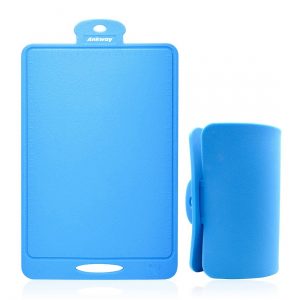 Cut up raw meats on dishwasher safe dedicated chopping boards. Remember that you should use these boards for nothing else, but cutting raw meat.
Cut up raw meats on dishwasher safe dedicated chopping boards. Remember that you should use these boards for nothing else, but cutting raw meat.
Use dedicated knives too, and wash both in a dishwasher or very hot soapy water.
Protect Your Hands:
Wear disposable latex gloves to handle meat and throw them away when you have finished.
Then wash your hands thoroughly with warm soapy water. The Center for Disease Prevention and Control recommends 20 seconds at least, of handwashing after.
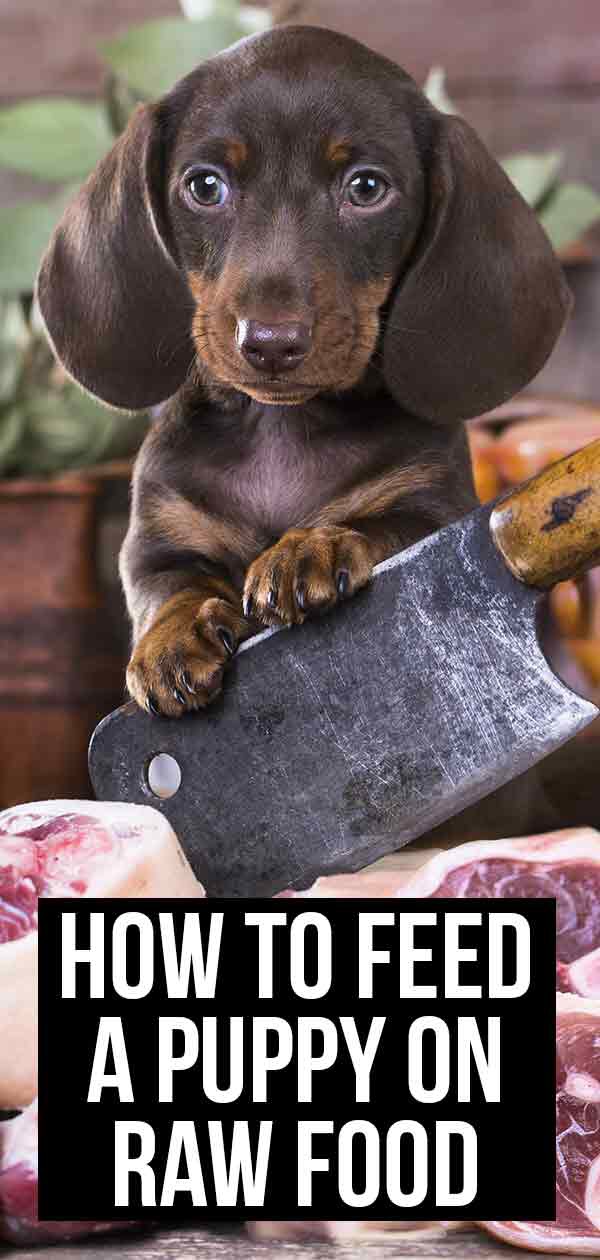
Rule 3 – Protect Your Puppy's Teeth From Hard Bones
Raw feeding offers both benefits and risks to your dog's teeth.
The major benefit is clean teeth—a result of the abrasive cleaning actions of processing bone.
The main risk is tooth damage. This can include serious fractures of the teeth requiring expensive dental treatment and involving pain for your dog.
Fortunately, this risk can be largely avoided, by the following:
Avoid Weight-bearing Bones of Large Animals
Avoid feeding your puppy weight-bearing bones of any large animal, such as cows, sheep, etc.
Weight-bearing bones are the bones the animal stands on. They include the long bones in the legs that carry all of its body weight. It is, however, OK to feed leg bones of small animals to most dogs. So, make sure to feed bones that are proportional to your dog's size.
Think about the size of animal a small to medium-sized dog might be able to catch and consume on his own. If your dog is medium to large-sized, this may be a rabbit, for example. That should be the largest size of animal to feed whole to your dog.
Very tiny dogs may need even smaller bones. Chicken wing tips for example, rather than the whole "arm" of the bird.
That does not mean you can't feed beef bones to most dogs—you can. But choose bones that do not support the animal's body weight, like ribs for example.
Rule 4 – Feed Your Puppy a Wide Variety of Meats
Puppies need sufficient nutrients to keep them healthy and provide for their rapid growth. The best way to provide those nutrients is to offer a wide variety of nutritious food.
 It is very tempting to just feed what is easily available at the time. Many raw feeders are overly reliant on chicken because it is easy to obtain, but this is not sufficient, especially for puppies.
It is very tempting to just feed what is easily available at the time. Many raw feeders are overly reliant on chicken because it is easy to obtain, but this is not sufficient, especially for puppies.
Here are some ideas for what you can and should give your puppy
What Is the Best Raw Food for Puppies?
If you make sure that your puppy has access to the following raw ingredients, at least once or twice each week, he should be able to access the nutrients he needs:
- Eggs
- Green tripe (stomach of herbivore)
- Oily fish
- Beef or lamb ribs with plenty of meat on them
- White fish
- Chicken backs, necks, wings and feet
- Pigs trotters
- Kidney, heart, lungs (of cow, pig, sheep)
- Liver (tiny quantities)
Eggs make a great raw food for puppies. Some dogs will eat the shell too, which is fine. You may have to whisk the egg slightly the first few times you feed, to get the puppy started.
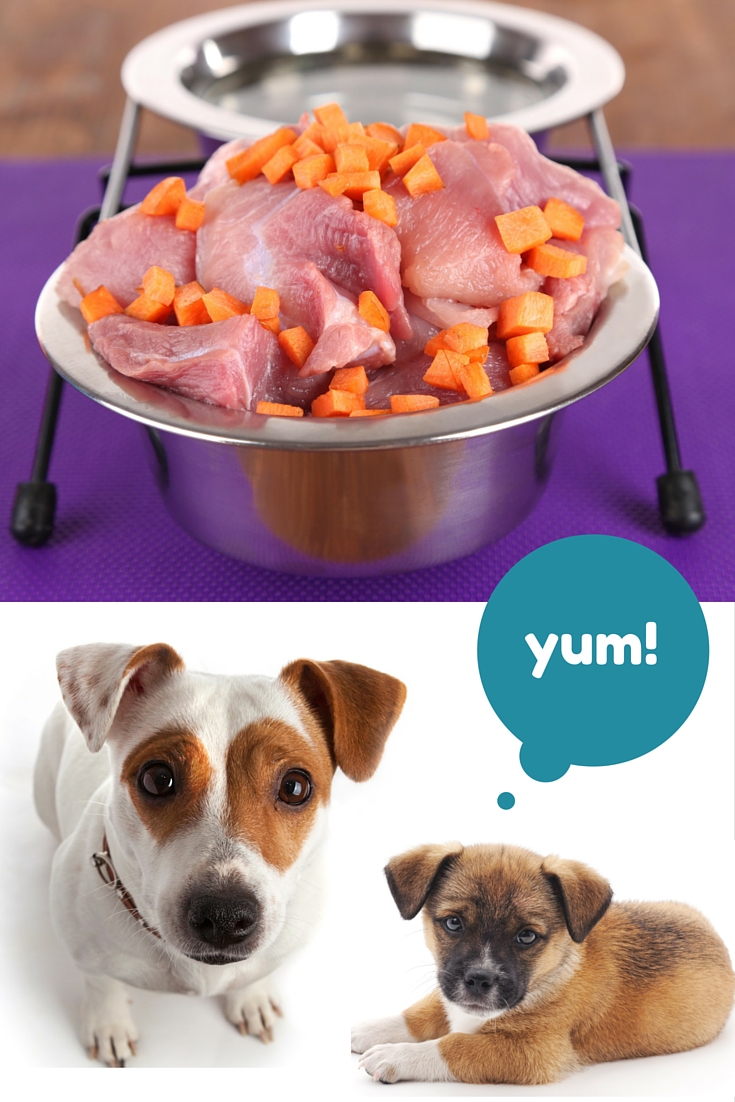
There is no truth to the myth that pork is poisonous to dogs. It is fine to feed puppies pig feet, meat, and organs.
Remember to avoid those large weight bearing bones as these are very hard and may damage your puppy's teeth.
Can Puppies Eat Vegetables?
Dogs in the wild eat the stomach of their prey and some of its contents, which may include digested vegetation. They may also consume fallen fruit, berries, and so on at certain times of the year.
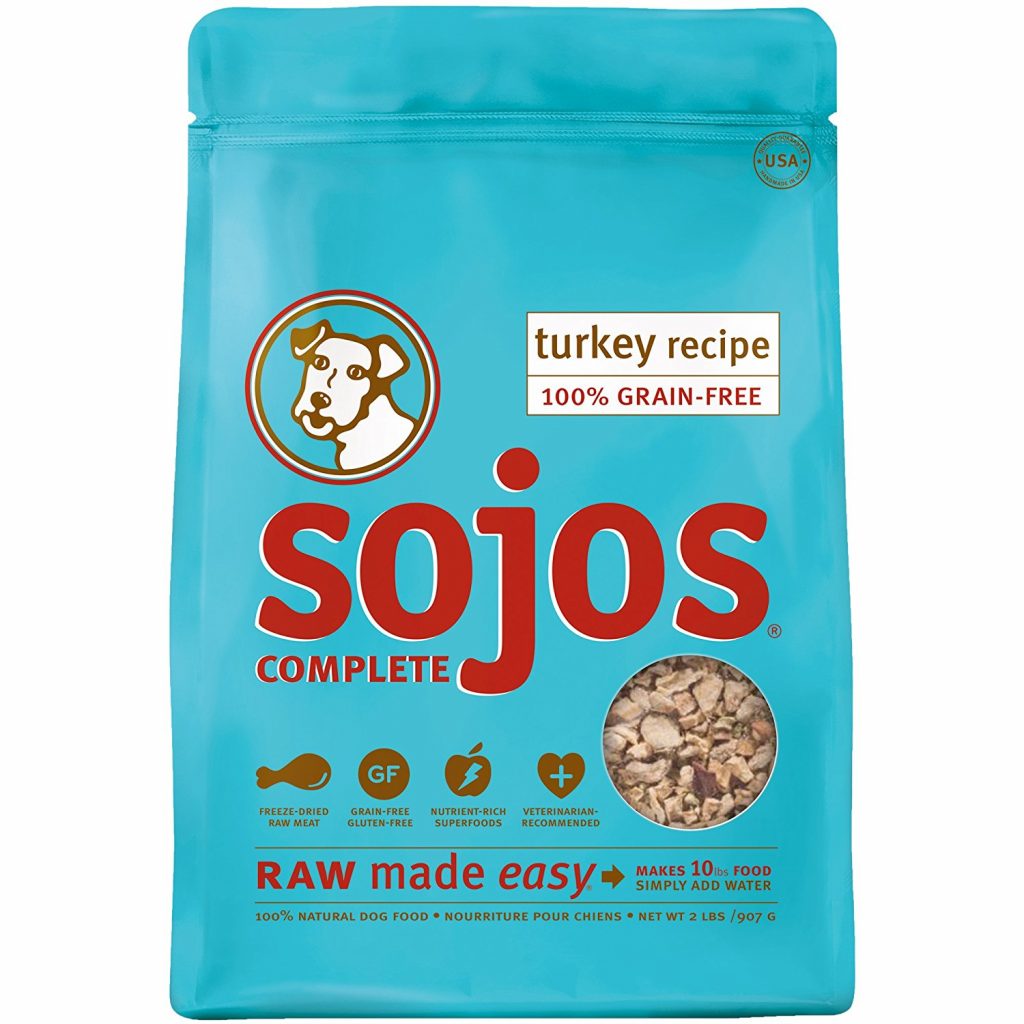
Tripe is the stomach of a herbivore – usually a cow or a sheep. Green simply means "unwashed." If you feed your dog "green" tripe, he will benefit from the minerals in the remains of the semi-digested material. On the other hand, humans typically eat white tripe. This kind has had all these important nutrients washed out of it, so it isn't beneficial for your dog.
Feeding green tripe and whole prey animals (whole rabbits, fish, etc.) intermittently is healthy. It will give your puppy access to the range of nutrients he needs. If your puppy's diet is more restricted, and you don't feed green tripe regularly, you'll need to supplement your dog's food with some vegetables.
Ensure that these are pureed or liquidised. (It is no use giving green vegetables whole, as your dog cannot digest them effectively).
Some people like to feed fruit and vegetables (carrots, for example) to their raw fed dogs as snacks. This is not a problem provided you are aware of which common human foods are toxic to dogs. (Onions are, for example).
How to Prepare and Serve Your Puppy's Raw Food
Don't Cut Food Up Too Small
If you cut up meat on the bone, your puppy may swallow large lumps of bone without first breaking them properly.
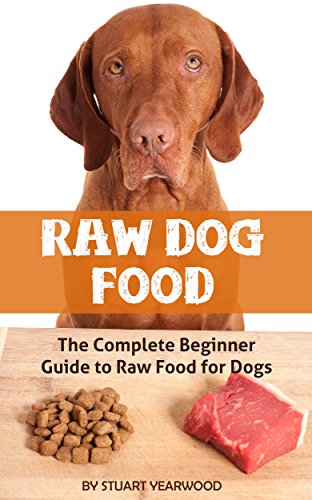
How small an item you can feed will depend on the size of your puppy. For example, take a Labrador puppy of three or four months old. He may be able to swallow a chicken wing whole if you feed just the last two joints. So it is best to feed the whole wing of a big chicken, or to feed a larger portion such as the back of the carcass.
That way he has to work on the wing to break it down before he swallows it.
Don't Crowd Your Puppy While He Is Eating Raw Meat
It is best not to stand over your puppy while he is eating raw meaty bones.
The idea is to avoid the dog "gulping" down large lumps of bone at once. They are more likely to do this if they think you are going to take their food away. So let your puppy eat in peace.
This can lead to the puppy gulping down larger quantities of bone than he can digest, instead of breaking it up with his teeth.
Raw meat is very valuable to dogs. You can understand why they may worry you'll take it away if you hang around while they eat.
Feed Your Puppy Enough Bone!
Many people rely on ground (minced) meat and steak. No wonder; they're easily found in local shops and supermarkets.
But feeding puppies ground up beef or steak is not a suitable diet. They need bone and connective tissue in their diet. So, ground meat alone will leave them deprived of minerals, and won't protect their teeth.
Don't be scared of bone. If you can't bring yourself to feed bone, raw feeding is not going to work for your puppy.
How Much Bone Does My Puppy Need?
Puppies need a substantial proportion (at least 10%) of their diet to be bone.
You can buy pet foods that contain minced bone, and it's ok to use these as part of your puppy's diet. But he needs to chew on actual bone to benefit from the dental hygiene aspects of a raw diet.
A dog that eating enough bone will produce firm stools that crumble when dry. If your dog's stools are loose he is probably not getting enough bone. Too much offal will also produce loose stools.
If your puppy's stools are hard and difficult to pass, you are probably feeding too much bone. It might be best to cut back a little.
Let Your Puppy Chew Up His Raw Food
Don't rely on ground meat to feed your youngster, even if it has been minced with bone in it.
Grinding or mincing meat isn't wrong per se. But don't teach your puppy to rely on you instead of his own teeth and jaws.
Mincing your eight-week-old puppy's green tripe, for example, is fine. But as soon as he is big enough to manage to tear chunks off by himself, let him do so.
How Much Water Do Raw-fed Puppies Need?
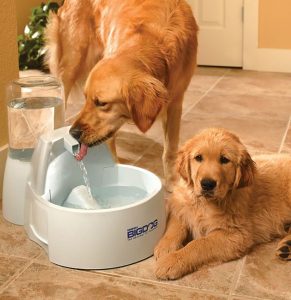 Raw-fed dogs drink a lot less than kibble-fed dogs do.
Raw-fed dogs drink a lot less than kibble-fed dogs do.
However, water is still essential.
Always ensure your dog has plenty of fresh water to drink. This is especially important when your dog has consumed a lot of bone.
He will drink as much as he needs.
It's true that water fountains like this one are increasingly popular. But don't stress about the trends. Your dog will be fine with a regular water bowl, provided you keep it clean and well filled
How Much Raw Food for Puppies?
As always, when feeding puppies, be guided by your dog, rather than a set of scales. You should be able to feel ribs, but not see them. And your puppy should have a waist.
As a rough guide, many puppies will need to eat the equivalent of 2-3% of their expected adult weight, every day.
So if you have a labrador puppy, feed him according to what he might be expected to weigh as an adult (around 60lbs). This would amount to just over 1 lb of food each day.
But don't forget, the "average" puppy doesn't really exist. Each puppy is different and will grow and eat at his own pace.
Fat Puppies
Puppies fed raw are far less likely to be fat, and much more likely to stop when they're full. It is difficult to overfeed using raw food for puppies. So if you want to give your puppy a little more because he seems hungry, then by all means.
Just keep an eye on that waistline, and cut back for a few days if he starts to get plump.
Thin Puppies
If you think your puppy is looking a little thin, despite being fed as much as he wants, think intestinal worms.
You should deworm him regularly with a puppy deworming medication from your vet. You can also find them on online veterinary pharmacies. There is NO truth in the myth that raw fed puppies don't get worms.
At the time of writing, fenbendazole is considered very safe. You should always check with your vet before deworming your puppy or dog for the first time.
Deworming Your Puppy
The thought of deworming your dog may sound gross to you, but it is a necessary evil. Dogs can become infested with different kinds of worms. The most common is the roundworm, but they can also have tapeworms, hookworms, and whipworms.
Besides weight loss, a worm-infested pup may also vomit or experience diarrhea. Be sure to see your vet to check their feces and choose an appropriate dewormer. Panacur is the dewormer I use for my puppies. The active ingredient is fenbendazole, and there are a range of products based on it including the popular Safe-Guard.
After deworming, your dog may pass the dead worms in his feces. Some dogs may also experience vomiting.
Other dogs with heartworm may be at risk of pulmonary thromboembolism after deworming. This happens when the killed worms block the dog's arteries. That's also why your vet should make sure< which worms your pup has before deworming.
But try not to worry; your pup should be good as new soon after.
How Often to Feed Your Puppy
Don't try to give your puppy his whole day's ration at once.
Divide the daily ration into four portions for puppies under three months old. Do three portions for puppies between three and six months of age. And for pups six month to 1 year old, do two portions.
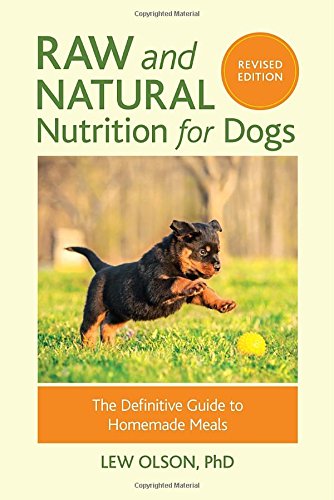
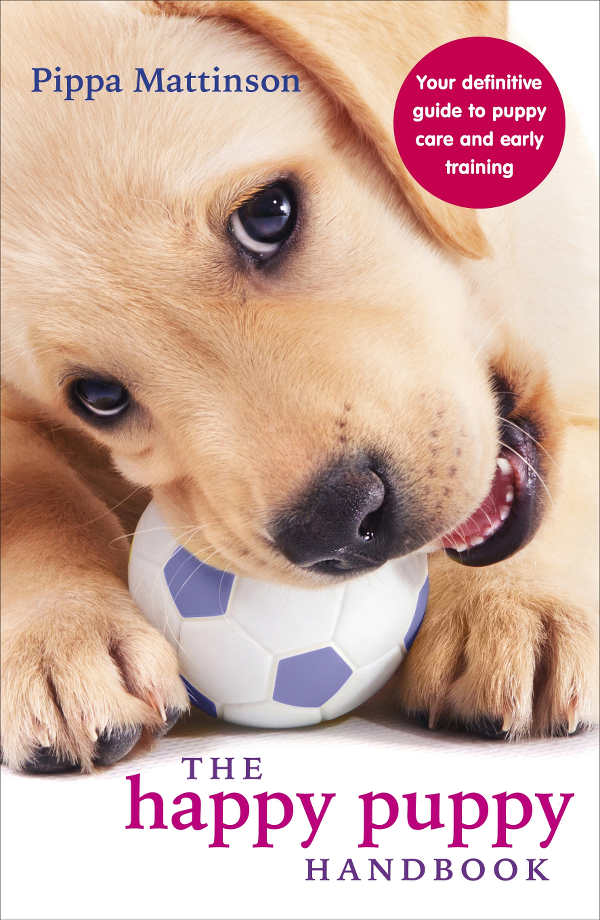
Spread these meals out over the day at three to four hourly intervals. You don't have to stick to these guidelines rigidly, and raw fed puppies may not want to eat as frequently as kibble fed pups.
If your three-month-old puppy only wants to eat twice a day and is thriving, then that is OK.
Adult Dogs and Fasting
Adults can eat once or twice a day. It is up to you and your dog. Don't forget that dogs in the wild may go long periods without eating, then eat a LOT of meat and bone in one go.
Your adult raw fed dog won't come to any harm if you miss a day's food and give him extra the next day. In fact many experts believe that occasional fasting is beneficial for you dog.
However, do NOT fast a dog on kibble, then allow him to gorge on extra rations the next day. Kibble is not designed to be consumed in large quantities, and your dog is not designed to process it that way.
How to Start Using Raw Food for Puppies
If your puppy is currently being fed on kibble and you want to make the switch, you'll be excited to make a start.
But it's important to take this one step at a time. Don't just plunge in with a medley of foods. Lots of new foods all at once may trigger a tummy upset.
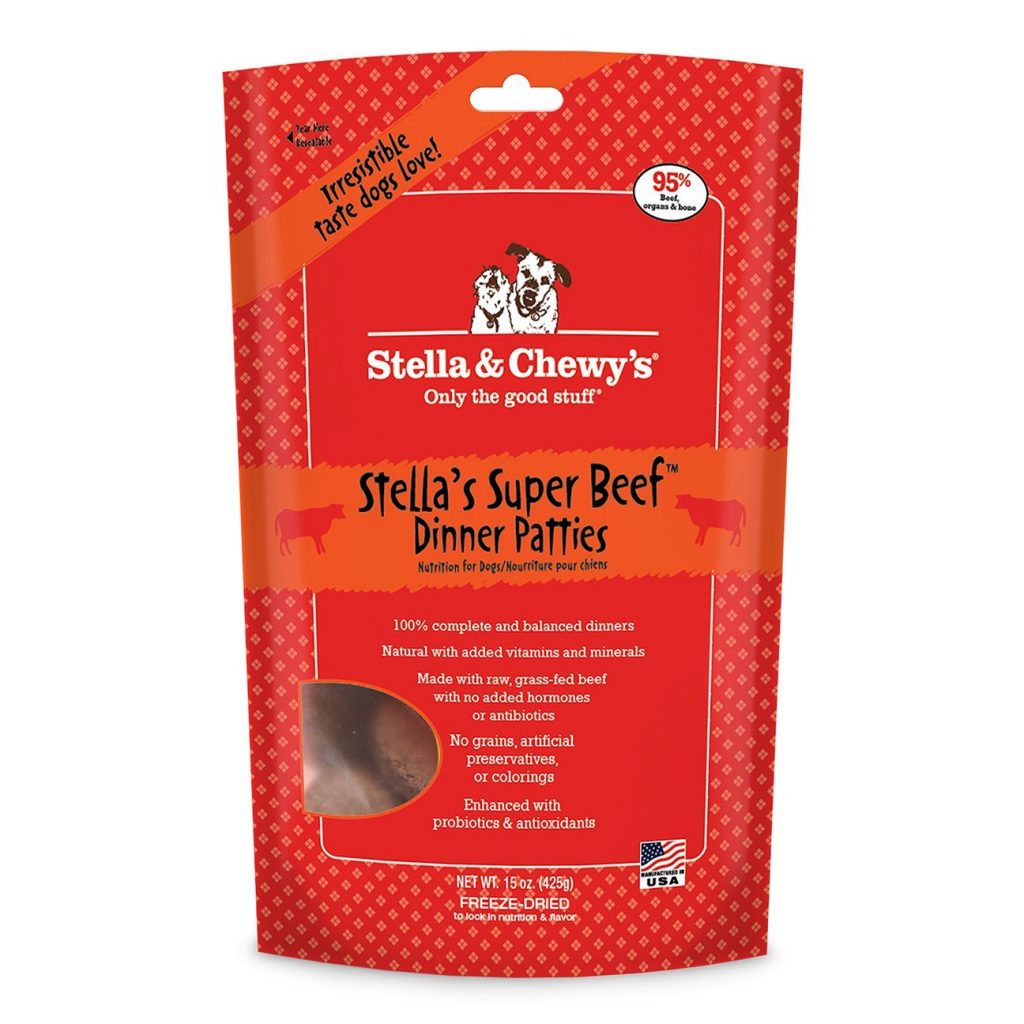
Start with one food. Chicken is usually well tolerated. Feed a meager amount at the first meal, and if all is well, slightly more at the next. After a couple of days, add another food—eggs for example, or tripe.
The rule is: small quantities at first, increasing gradually at each mealtime.
Of course meal variety is important. But a healthy puppy won't starve or suffer from deficiencies over just a few days.
And this gradual introduction will allow his stomach and digestive system to get used to his new way of eating.
Raw Food for Puppies on a Budget
We all want the best for our dogs. So it is likely that after reading this, you really want to start using raw food with your pup. Except, you have one issue: your budget is pretty low.
Trust me, we've all been there. Thankfully, it's not impossible to give your dog some healthy raw food on a budget. We've found these three tips to be super helpful:
-
- Skip the prepackaged raw foods: Make your own raw food plates for your dog instead.
- Shop for cheaper animal parts: This was an eye-opener for me! Parts like chicken feet, chicken necks are less expensive and may fit in your budget.
- Use dog-safe vegetable peelings: Be sure to only pick fruits and veggies safe for dogs.
Getting Help with Using Raw Food for Puppies
For some fun ways to use raw food for puppies, check out our article on great ideas for natural raw dog food.
If you are having trouble deciding between raw food and kibble for your puppy, then have a look at our pros and cons of raw and pros and cons of kibble articles too.
There are also lots of raw feeding dog owners on my forum, so do come along, say hello, and let us help and support you.
There's good advice about the practicalities of feeding raw to help you choose whether or not raw feeding is for you
Good luck with using raw food for puppies!
More Information on Puppies
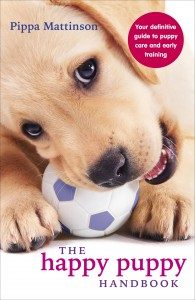
The Happy Puppy Handbook covers every aspect of life with a small puppy.
The book will help you prepare your home for the new arrival, and get your puppy off to a great start with potty training, socialization and early obedience.
The Happy Puppy Handbook is available worldwide.
References
-
- DrBarchas.com. Barchas, Dr. E. VMD, Roundworms (Intestinal Worms) in Cats and Dogs
- Centers for Disease Control and Prevention. Chicken and Food Poisoning
- Veterinary Medicine and Science. Craig, J. M. (2016), Atopic dermatitis and the intestinal microbiota in humans and dogs.
Raw Food for Puppies: How to Feed Your Puppy on Natural Raw Food has been extensively revised for 2019.

How Much Raw Food to Feed German Shepherd Puppy
Source: https://thehappypuppysite.com/how-to-feed-your-puppy-on-natural-raw-food/